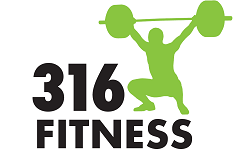Science Friday – Why You Should Foam Roll Prior to Exercise
Over the last decade foam rolling has gained popularity as a self-myofascial release technique that works on the same principle as massage. Namely that it reduces any restrictions and adhesions between fascial layers (the connective tissue that surrounds muscles, tendons, bones, etc), but instead of a therapist providing the external pressure to the soft tissue, the user simply places their body weight onto a foam roller to exert pressure on their own soft tissue.
Despite the growing popularity there is limited research into the effectiveness of foam rolling. Proponents chiefly use this technique as a way of increasing range of motion (ROM) prior to exercise and/or to improve post-exercise recovery. Increasing ROM prior to exercise is important for athletes as they must be able to attain an optimal position to maximize their ability to safely produce force. After all, if an athlete can’t raise their arms above their head without compensating through hyperextension of the lower back, or internally rotating the shoulder, then how would they expect to safely press maximal weights overhead?
Traditionally static stretching has been used to increase ROM prior to exercise but several studies have shown that static stretching actually reduces the amount of force that an athlete can produce immediately after stretching. The study I want to discuss today entitled, “An acute bout of self-myofascial release increases range of motion without a subsequent decrease in muscle activation or force“, looked at the immediate effects of foam rolling on ROM and force production.
In this study the subjects were split into one group that foam rolled their quads for two 1 minute sessions with 30 seconds between sessions and another control group that performed no foam rolling. Knee joint ROM was measured before and after (2min and 10min) foam rolling and a number of methods were used to measure quad activation and force production. On average the subjects improved their knee ROM by 11 degrees and 9 degrees when measured 2 minutes and 10 minutes after foam rolling respectively. Obviously there was no similar improvement in the control group.
However, the most interesting part of this study was that there was not a significant reduction in quad force production or activation after foam rolling. In other words, subjects got the benefits of static stretching – increased ROM – without the negative side effect of reduced force production. The authors of the study postulate that this is attributed to the physiological differences between how the ROM is improved for static stretching versus foam rolling. The former places pressure at the insertion points of the muscle and may cause tissue damage while the latter reduces the fascial viscosity to a more gel-like state through mechanical stress of the tissue.
Conclusion: Foam rolling is an effective method for increasing joint range of motion prior to exercise without reducing your muscle’s ability to generate force. You should do it more often…
